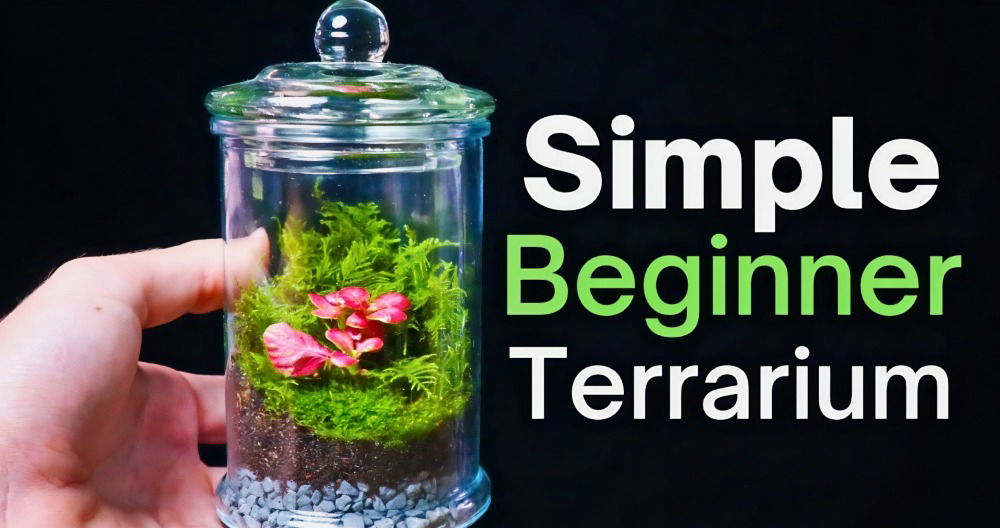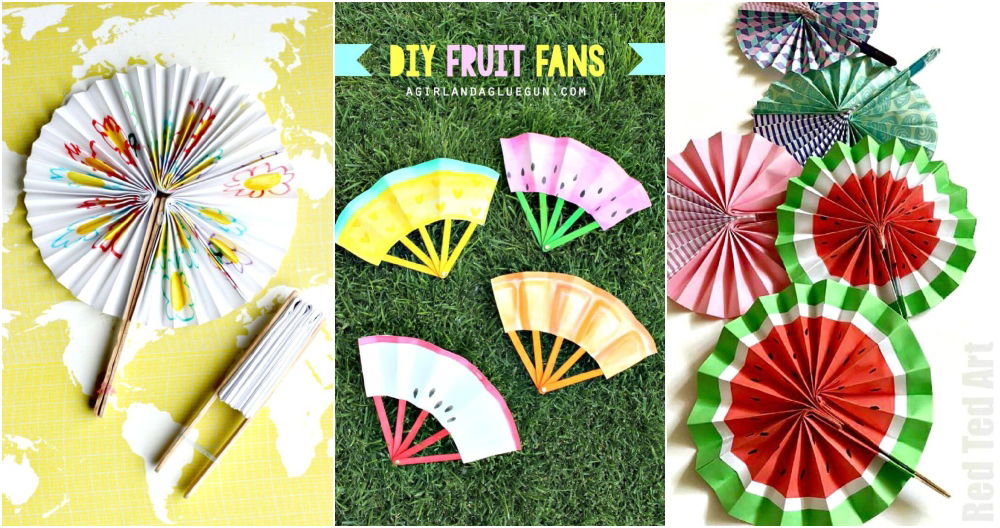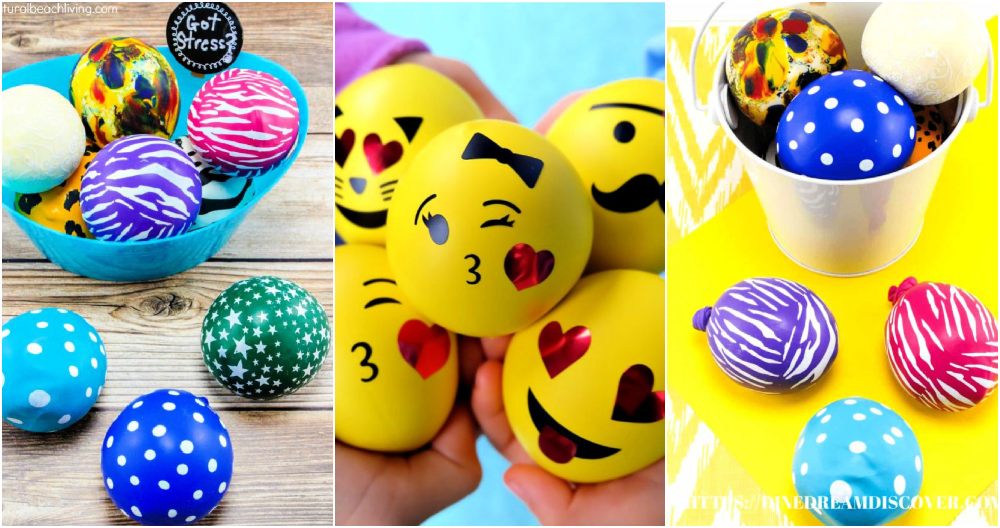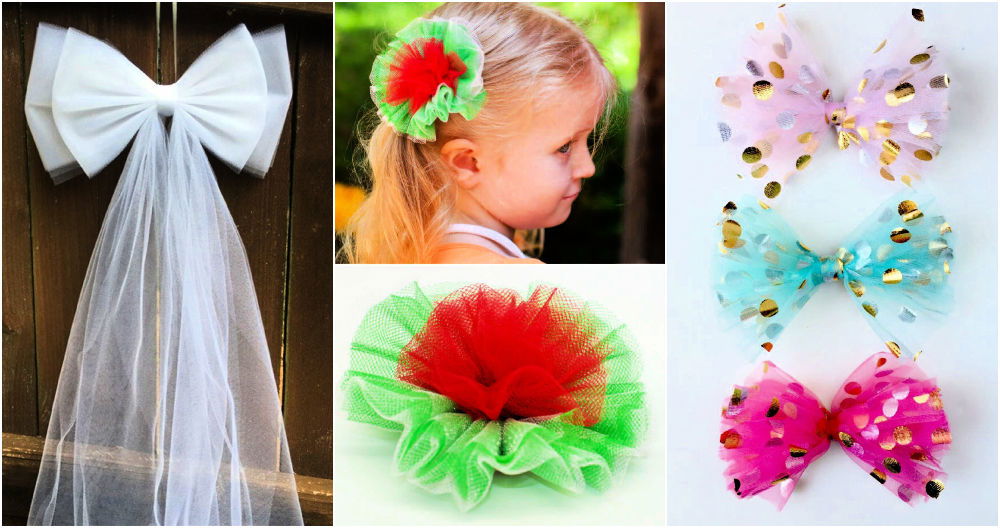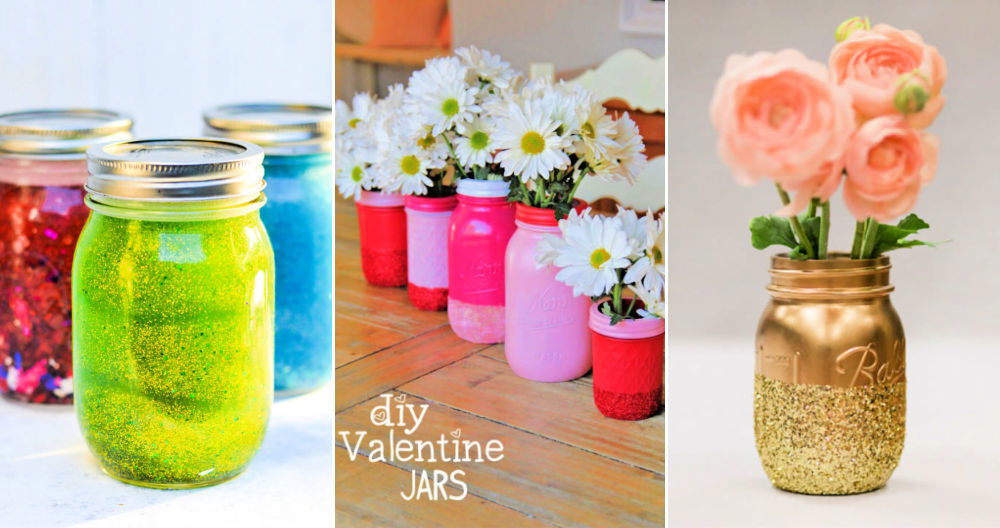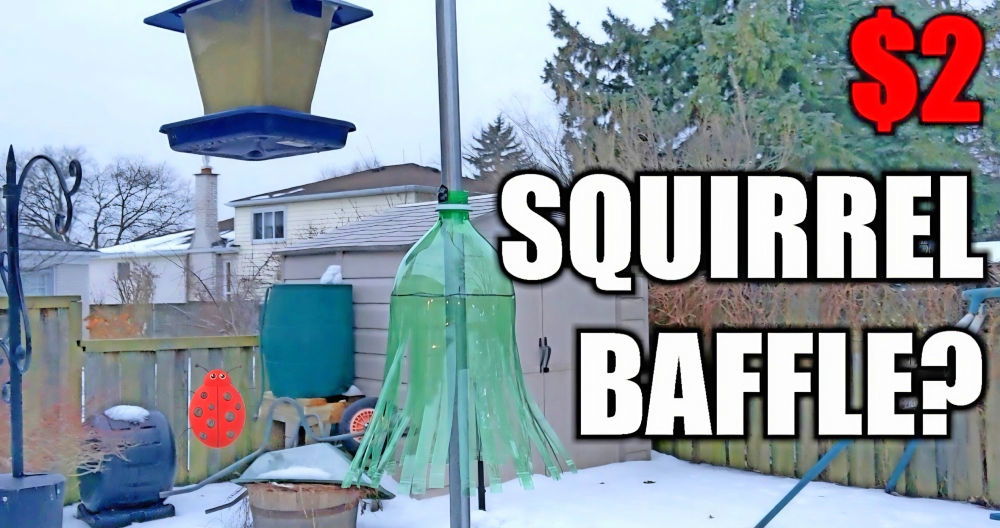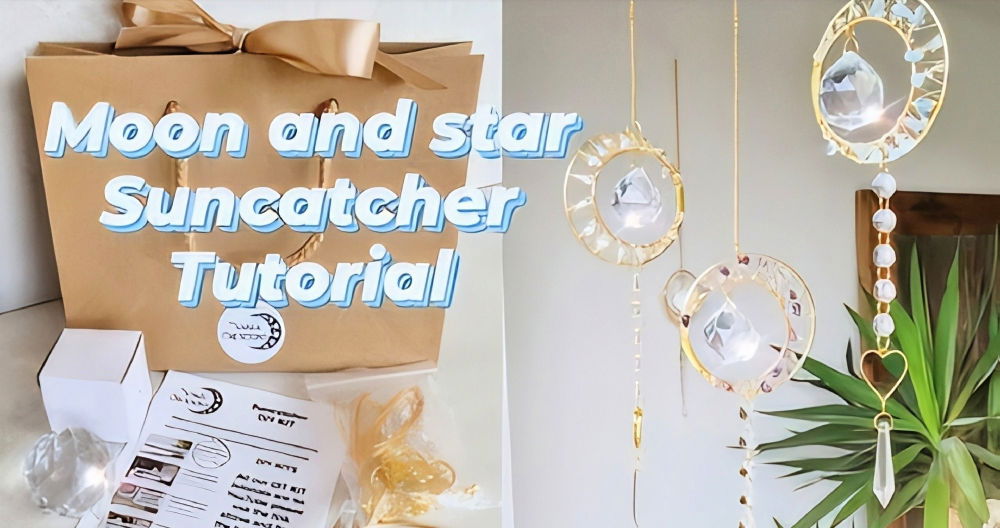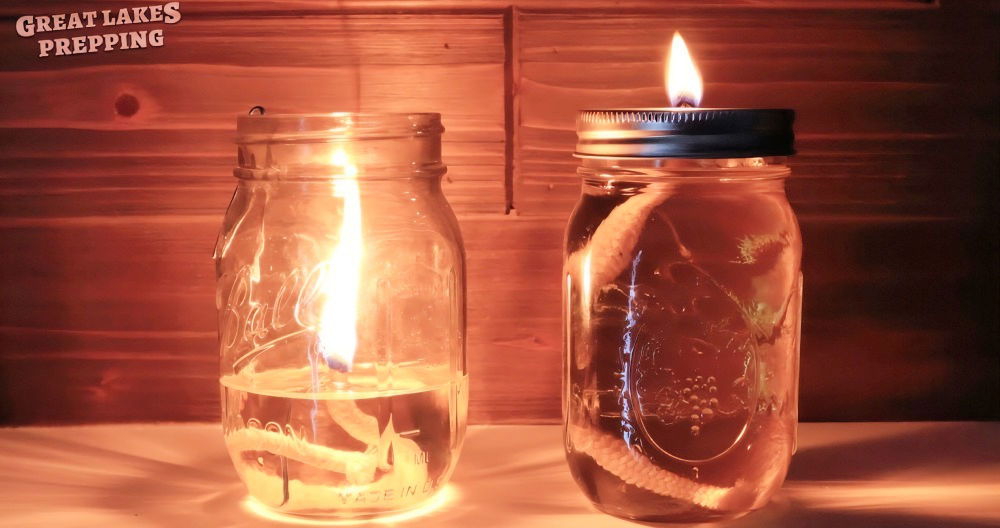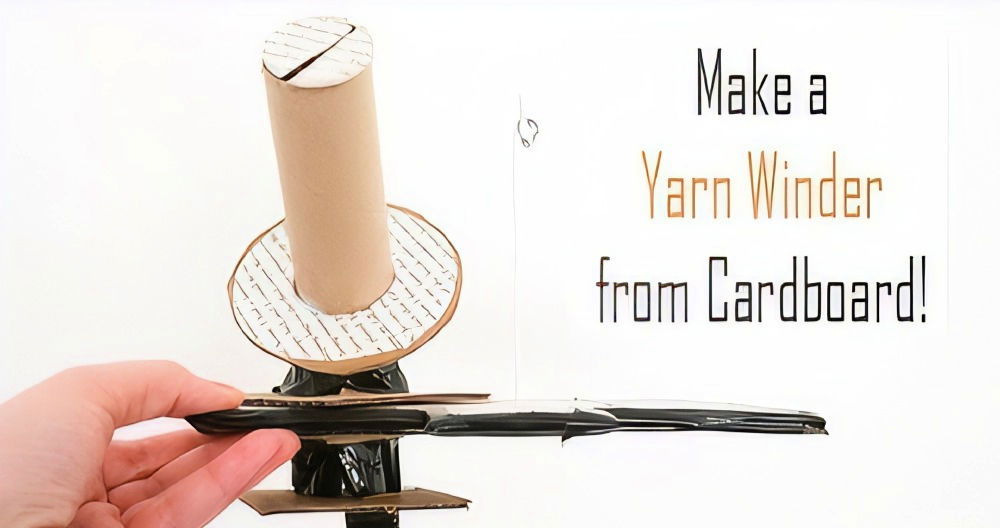Today, I decided to tackle a project that's purely based on aesthetics—making a DIY succulent terrarium. If you're like me and enjoy plants but struggle to keep them alive, succulents are a fantastic option. They're low-maintenance, resilient, and perfect for an indoor environment. In this guide, I'll walk you through the process I followed, highlighting the materials I used and the lessons I learned along the way.
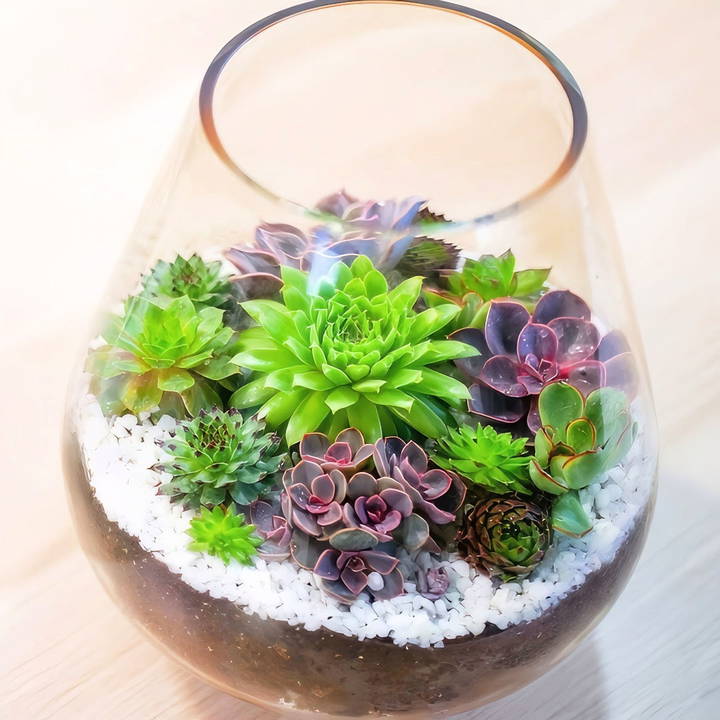
Why a Succulent Terrarium?
A succulent terrarium can be both decorative and practical. Unlike a traditional closed terrarium, which requires specific humidity control, I opted for an open terrarium that's simple to maintain. It's perfect for people who want to add a touch of greenery to their space without the hassle of daily plant care. However, it's important to note that good lighting and occasional watering are key to keeping your succulents thriving.
Materials You'll Need:
- Glass Bowl: Choose something aesthetically pleasing that fits your decor.
- Activated Charcoal: Helps purify water and prevent odors.
- Rocks or Pebbles: To make a drainage layer.
- Bark: Optional, but it adds a nice decorative touch.
- Succulent Potting Mix: I used a mix of coco peat and compost for better drainage.
- Succulents: Select a variety of shapes and colors to make visual interest.
- Decorative Rocks: White pebbles or colored stones can enhance the terrarium's look.
Step by Step Instructions
Make a stunning DIY succulent terrarium with our step-by-step guide. From activated charcoal to maintenance, we've got you covered!
Step 1: Start with Activated Charcoal
I started by adding a thin layer of activated charcoal to the bottom of the glass bowl. This might seem like a minor detail, but it's an essential one. Charcoal helps purify the water, preventing any bad smells if excess water gathers at the bottom. It also helps absorb moisture if you accidentally overwater your terrarium—a common mistake with succulents.
The amount of charcoal to use isn't an exact science. I just sprinkled enough to cover the bottom, which seemed to work well. The goal is to make a layer that helps manage water levels without overwhelming the design.
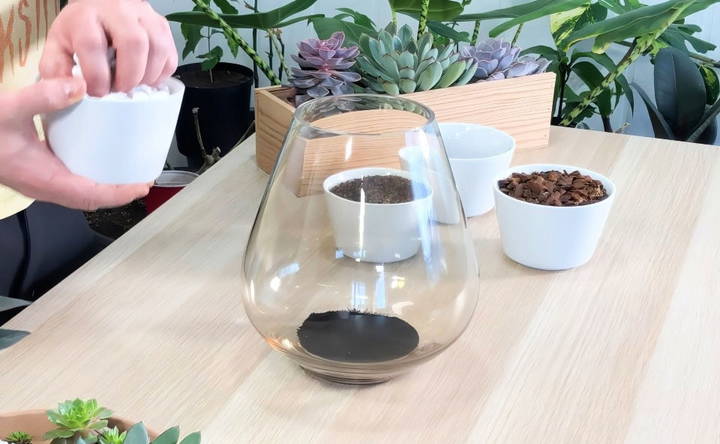
Step 2: Add a Layer of Rocks
The next step was to add a layer of rocks. I used some decorative deck rocks I had lying around. The purpose here is to make a drainage system. In an open terrarium, water tends to gather at the bottom, and the rocks provide a space for excess water to escape. This prevents the soil from becoming waterlogged, which can cause root rot in succulents.
The rocks also add an interesting visual texture to the base of the terrarium. Just be careful when placing the rocks in the glass bowl to avoid cracking the glass.
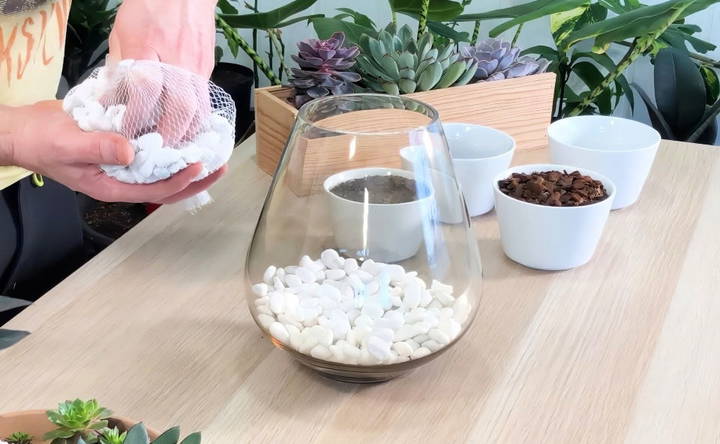
Step 3: Add Bark (Optional)
For my terrarium, I used orchid bark as an extra layer between the rocks and the soil. While some people prefer moss for this layer, I found that bark works just as well and adds a rustic feel. The bark also prevents the fine soil particles from seeping through into the rocks, maintaining a clean separation between layers.
If you don't have bark on hand, moss or another type of decorative material can serve the same purpose. This is where you can get creative based on what materials you have available.
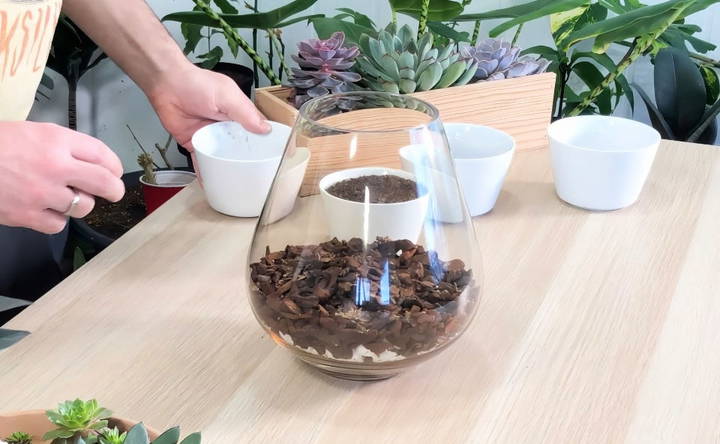
Step 4: Add the Succulent Potting Mix
The soil you choose is crucial for the health of your succulents. I mixed coco peat with a little compost, ensuring that the mix was organic and suitable for indoor use. Succulents need well-draining soil, so avoid regular potting mix which retains too much moisture.
Be sure to add enough soil so that the roots of your succulents have room to spread. The key here is to make an environment where the plants can thrive without becoming waterlogged.
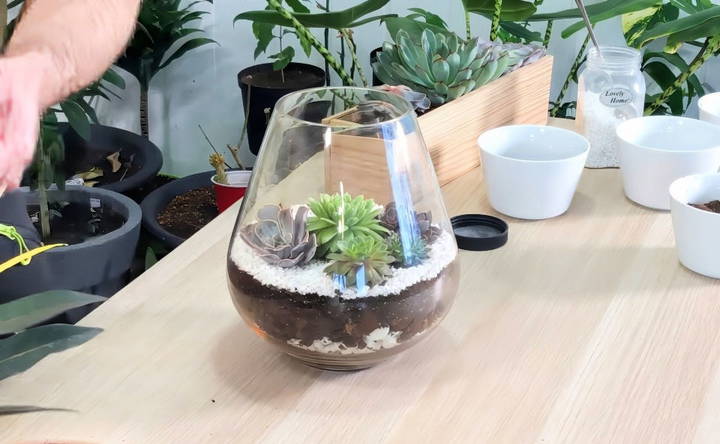
Step 5: Arrange Your Succulents
This is the fun part—arranging your succulents! I picked a variety of small succulents, focusing on different shapes and colors to make a visually appealing design. When placing the plants in the soil, make sure they are deep enough to stay upright but not buried too deeply.
Initially, I placed the plants in the soil without adding any decorative rocks. However, I quickly realized that it was difficult to arrange the plants and then add the rocks afterward. So, I took everything apart and started over, this time adding a thin layer of decorative rocks first. Once the plants were in place, I could easily adjust the rocks around them.
Succulents are pretty hardy and can grow in almost any condition, so don't worry too much about getting it perfect the first time. If necessary, you can always rearrange them later.
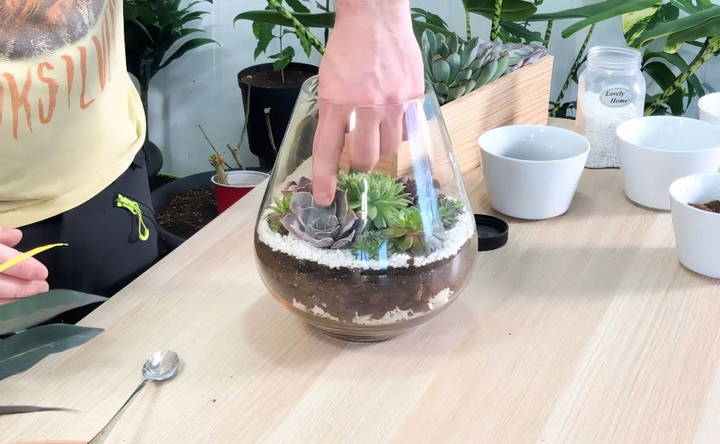
Step 6: Lighting and Watering
Once your terrarium is set up, it's important to place it in a spot where it can get adequate light. Succulents need a lot of sunlight to maintain their compact shape and vibrant colors. Without sufficient light, they tend to grow tall and leggy, which might ruin the look of your terrarium. If you don't have a south-facing window, consider using artificial grow lights.
Watering is another crucial aspect of keeping your succulent terrarium healthy. Succulents don't need much water, but they do require occasional deep watering. I recommend using a syringe to carefully water the base of each plant. This prevents overwatering and ensures that the water reaches the roots without sitting on the leaves, which can cause rot.
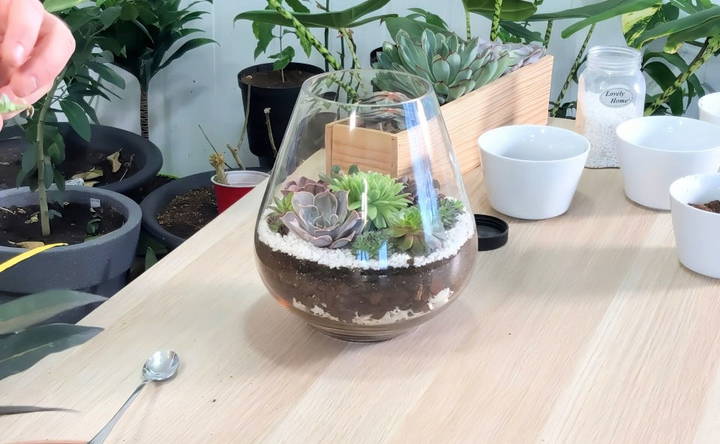
Step 7: Maintenance and Fertilization
Succulents are slow-growing, but they still need a little TLC. Fertilizing them every one or two months will keep them healthy and encourage growth. Use a diluted fertilizer, either organic or inorganic, and carefully apply it around the base of the plants.
You might also need to prune your succulents occasionally. If you notice any plants getting too tall or outgrowing the terrarium, you can trim them back and replant the cuttings elsewhere. This keeps your terrarium looking neat and compact.
Seasonal Care Tips
Caring for succulents involves adjusting your routine based on the season. Here are some tips to ensure your succulents thrive year-round.
Winter Care
During winter, succulents enter a dormant phase. They need less water and light.
- Watering: Reduce watering to once every 3-4 weeks. Ensure the soil is completely dry before watering again.
- Light: Place succulents in a bright spot, but avoid direct sunlight. If natural light is limited, use a grow light.
- Temperature: Keep succulents in a cool room, ideally between 50-60°F (10-15°C). Avoid placing them near drafts or heating vents.
Spring Care
Spring is a growth period for succulents. They need more water and nutrients.
- Watering: Increase watering frequency to once every 1-2 weeks. Ensure the soil dries out between waterings.
- Light: Gradually increase exposure to sunlight. Move succulents to a brighter spot or outdoors if temperatures are mild.
- Fertilizing: Start fertilizing with a balanced, diluted fertilizer once a month to support new growth.
Summer Care
Summer can be challenging due to high temperatures and intense sunlight.
- Watering: Water more frequently, about once a week. Check the soil regularly to prevent it from drying out completely.
- Light: Provide bright, indirect sunlight. If outdoors, place succulents in a shaded area to avoid sunburn.
- Temperature: Protect succulents from extreme heat. If temperatures exceed 90°F (32°C), move them to a cooler spot.
Autumn Care
Autumn is a transition period. Prepare succulents for the upcoming dormancy.
- Watering: Gradually reduce watering frequency to once every 2-3 weeks.
- Light: Maintain bright, indirect sunlight. If outdoors, start moving succulents indoors as temperatures drop.
- Fertilizing: Stop fertilizing to allow succulents to prepare for dormancy.
By adjusting your care routine with the seasons, you can keep your succulents healthy and vibrant all year long.
Troubleshooting Common Issues
Succulents are generally low-maintenance, but they can still encounter problems. Here are some common issues and how to fix them.
Overwatering
Symptoms: Leaves become mushy, swollen, and may fall off. The stem might appear puffy.
Solution:
- Reduce Watering: Allow the soil to dry out completely before watering again.
- Drainage: Ensure your pot has drainage holes. If not, consider drilling some or using a different pot.
- Soil: Use a well-draining soil mix. If the current soil retains too much water, repot your succulent with a better mix.
Underwatering
Symptoms: Leaves turn yellow, shrivel, and wilt.
Solution:
- Increase Watering: Water the plant more thoroughly, ensuring the soil is moist but not waterlogged.
- Check Soil: Make sure the soil is not too dry. Water when the top inch feels dry to the touch.
Root Rot
Symptoms: Roots appear black or brown and mushy. The plant may show signs of wilting despite adequate watering.
Solution:
- Remove Affected Roots: Trim away any rotten roots with sterilized scissors.
- Repot: Place the plant in fresh, well-draining soil. Avoid watering immediately after repotting; let the plant settle for a few days.
Insufficient Light
Symptoms: Succulents become leggy, with stretched-out stems and sparse leaves.
Solution:
- Increase Light: Move the plant to a brighter location with indirect sunlight.
- Supplement: Use a grow light if natural light is insufficient.
Sun Damage
Symptoms: Leaves develop brown, crispy spots or turn red.
Solution:
- Move to Shade: Relocate the plant to a spot with indirect sunlight.
- Gradual Exposure: Gradually increase sunlight exposure to avoid shock.
Pests
Common Pests: Mealybugs, spider mites, and aphids.
Solution:
- Manual Removal: Remove pests with a cotton swab dipped in rubbing alcohol.
- Natural Remedies: Use neem oil or insecticidal soap to treat infestations.
- Isolation: Keep affected plants away from healthy ones to prevent the spread.
Fungal Diseases
Symptoms: White, powdery spots on leaves or stems.
Solution:
- Remove Affected Parts: Trim away any diseased areas.
- Improve Airflow: Ensure good air circulation around the plant.
- Fungicide: Apply a fungicide if the problem persists.
By addressing these common issues promptly, you can keep your succulents healthy and thriving.
FAQs About DIY Succulent Terrariums
Discover answers to common FAQs about DIY succulent terrariums, including tips on care, maintenance, and design for perfect indoor greenery.
A succulent terrarium is a glass container that houses succulents and other decorative elements. It makes a miniature ecosystem that is both beautiful and easy to maintain.
Drainage prevents water from accumulating at the bottom, which can cause root rot. A layer of small rocks or pebbles helps with this.
Most succulents work well in terrariums. Avoid cacti, as they prefer a drier environment. Choose small succulents that fit well in your container.
Water your terrarium only when the soil is completely dry. This could be once every two weeks or even less frequently, depending on your environment.
Yes, but choose plants with similar water and light needs. Avoid mixing succulents with plants that require more moisture.
Final Thoughts
Making a DIY succulent terrarium was a rewarding project. While it took some trial and error, the end result was worth the effort. The key is to be patient, experiment with different materials, and enjoy the process. With the right lighting, proper watering, and occasional fertilizing, your succulent terrarium will thrive and add a touch of greenery to your space for months to come.
If you're considering making your own succulent terrarium, I encourage you to give it a try. It's a simple yet creative way to bring nature indoors, and it's perfect for plant lovers who want something low-maintenance and long-lasting. Plus, the process itself is therapeutic—there's something calming about arranging plants and seeing your vision come to life.


